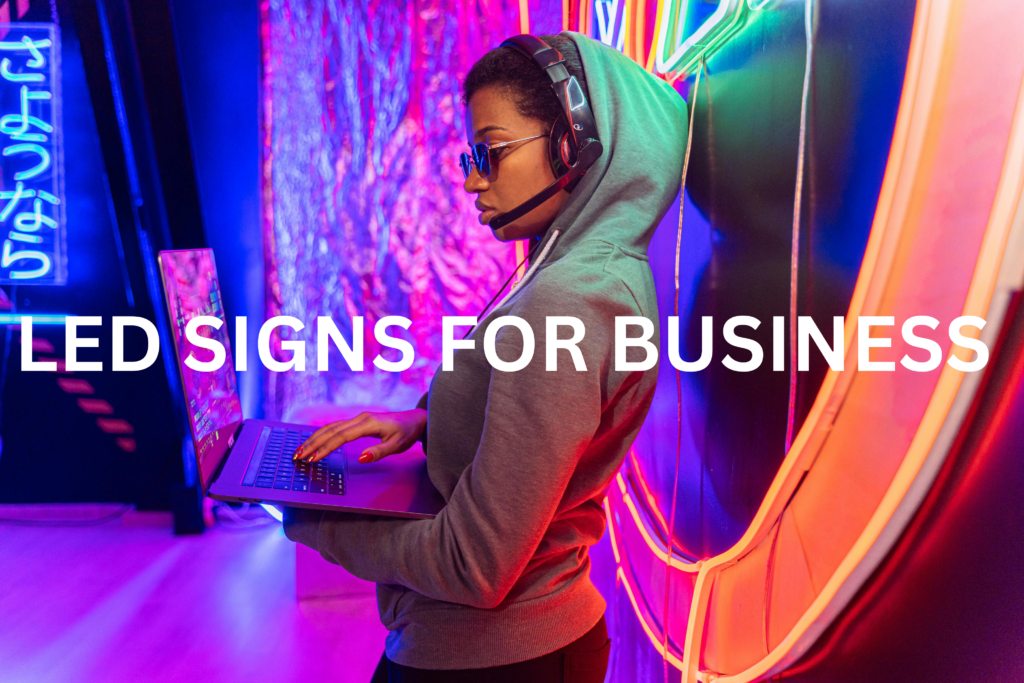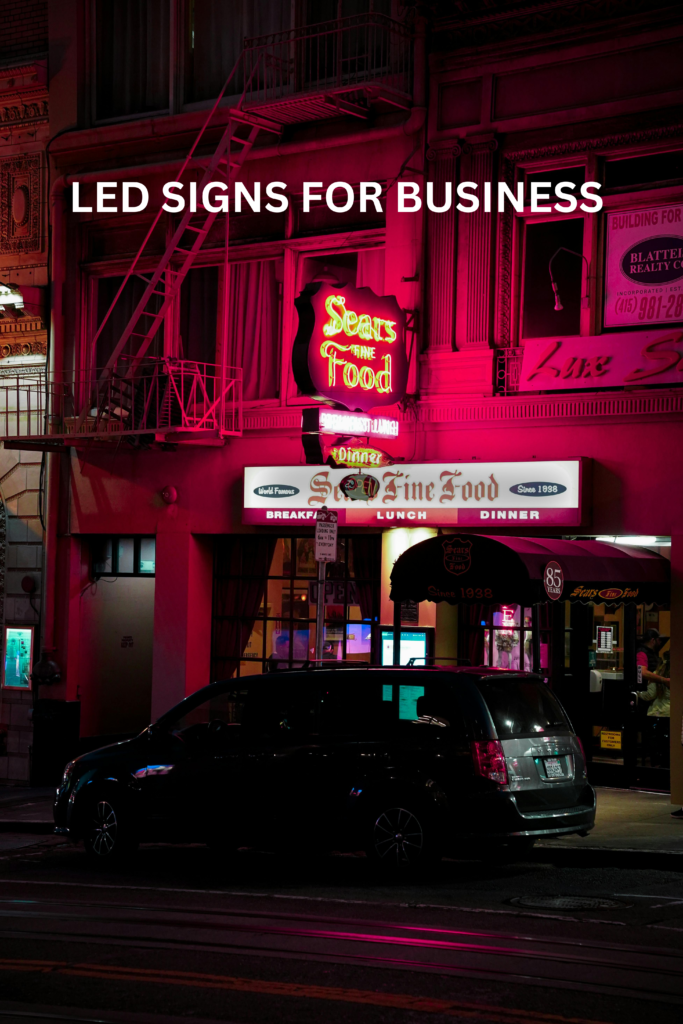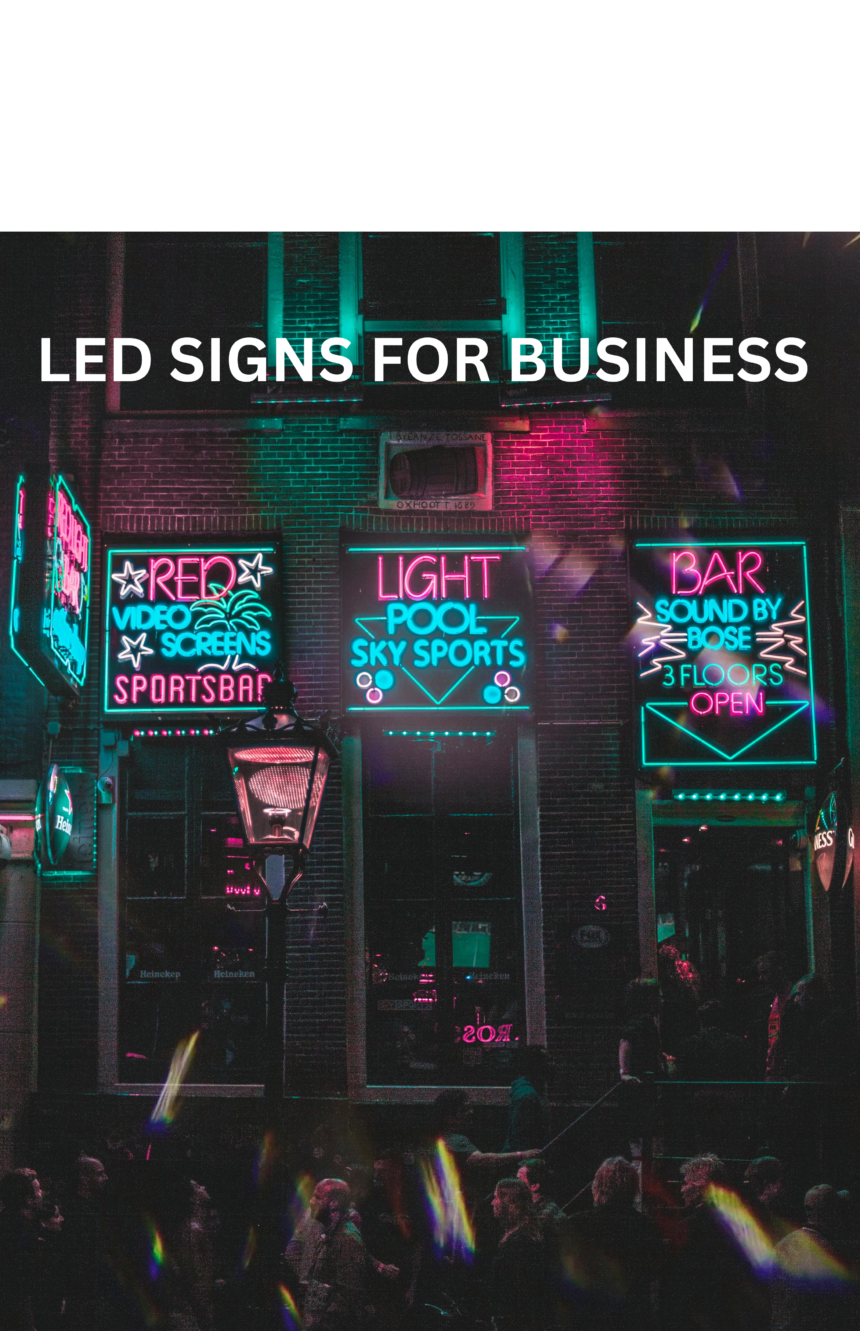In the ever-evolving world of marketing and advertising, LED signs have emerged as one of the most dynamic tools for businesses. Their vibrant displays, energy efficiency, and adaptability make them an appealing choice for companies looking to stand out. However, as with any innovation, questions arise: are LED signs truly a long-lasting investment for businesses, or are they just a passing trend destined to be replaced by newer technology? In 2024, the debate continues as businesses weigh the pros and cons of this powerful advertising medium.
The Rise of LED Signs For Business
LED signs for business have been around for decades, but their popularity surged in the 2000s as technology improved. Today, they are ubiquitous in commercial areas, with businesses of all sizes using them to attract attention, provide information, and create brand awareness. From digital billboards to smaller storefront signs, LED displays have become a staple in marketing strategies.
LED signs for business stand out due to their ability to display dynamic content, including animations, videos, and scrolling text. This flexibility allows businesses to update messages quickly, offer promotions, or showcase new products. Unlike traditional static signs, which require manual updates or replacement, LED signs can be programmed remotely, saving time and labor costs.

Advantages of LED Signs for Businesses
1. Enhanced Visibility and Engagement: One of the key strengths of LED signs for business is their brightness and visibility. Whether during the day or at night, these signs catch the eye of potential customers with vivid colors and motion. Studies have shown that dynamic, moving content is more likely to grab attention than static signs, making LED displays an effective way to increase foot traffic and brand recognition.
2. Cost-Effective in the Long Run: While the initial investment for an LED signs for business may be higher than for traditional signage, the long-term benefits often outweigh the costs. LED lights are energy-efficient, using significantly less power than neon or fluorescent lighting. Additionally, their durability means they can last for years with minimal maintenance. This makes them a cost-effective solution for businesses looking to save on both electricity and repair costs.
3. Versatility: LED signs for business can display a wide range of content, from simple text to complex graphics and videos. This versatility allows businesses to tailor their messaging based on time of day, season, or current promotions. For example, a restaurant can display breakfast specials in the morning and switch to dinner promotions in the evening—all with the click of a button. This adaptability is a major selling point for companies that need to stay agile in a fast-paced market.
4. Environmental Benefits: Compared to traditional neon signs, which rely on gases like mercury or argon, LED signs for business are a more eco-friendly option. LEDs emit less heat and use significantly less energy, reducing a business’s carbon footprint. As sustainability becomes a more critical concern for both consumers and companies, the environmental benefits of LED signs are an attractive feature.
5. Customization and Brand Building: LED signs for business can be customized to reflect a business’s brand identity. From the choice of colors and fonts to the inclusion of logos or slogans, these signs provide a unique opportunity for businesses to strengthen their brand. This level of customization allows companies to stand out in competitive markets and foster a stronger connection with their target audience.

Challenges and Potential Downsides
Despite their many advantages, LED signs are not without their drawbacks. Some of the concerns businesses may face include:
1. Initial Costs: The upfront investment for LED signs can be significant, especially for smaller businesses or startups with limited budgets. Depending on the size and complexity of the sign, installation costs can range from several thousand to tens of thousands of dollars. While the long-term benefits can outweigh these initial costs, businesses need to carefully consider their budget and return on investment.
2. Over-Saturation: As LED signs for business become more common, there’s a risk of them losing their impact. In areas where multiple businesses use bright, dynamic displays, it can become overwhelming for consumers, leading to a phenomenon known as “visual noise.” When there are too many competing signs, the effectiveness of any individual sign can diminish, making it harder for businesses to stand out.
3. Technology Dependency: While LED signs for business are technologically advanced, this also means they are reliant on software and hardware that can occasionally malfunction. Power outages, software glitches, or hardware failures can render an LED sign useless, potentially leading to lost business during critical periods. Companies need to be prepared for these technical challenges and have plans in place for timely repairs or troubleshooting.
4. Regulatory Issues: In some cities or municipalities, the use of LED signs is regulated due to concerns about light pollution or distractions to drivers. Businesses may face restrictions on the brightness, size, or type of content they can display. Before investing in an LED sign, it’s essential for businesses to check local regulations to ensure compliance.
Are LED Signs a Passing Trend or Here to Stay?
As we enter 2024, it’s clear that LED signs are more than just a fleeting trend. Their versatility, energy efficiency, and ability to engage customers make them a valuable tool for businesses across industries. However, whether they remain relevant in the long term will depend on how companies adapt to changing technology and consumer preferences.
One factor that could shape the future of LED signs is the rise of augmented reality (AR) and virtual reality (VR) in advertising. These technologies offer even more immersive experiences for consumers, potentially eclipsing the impact of traditional LED signs. Businesses that are early adopters of AR and VR may find new ways to captivate their audiences beyond static or dynamic LED displays.
That said, LED signs are likely to continue playing a role in business marketing for years to come. Their cost-effectiveness, customization options, and eco-friendly features ensure they remain an attractive option for businesses of all sizes. As long as companies continue to innovate and leverage the full potential of LED technology, these signs will remain a staple in the advertising toolkit.

Conclusion
In 2024, LED signs for business remain a powerful and effective advertising tool, but their long-term success depends on how well businesses can adapt to changing market conditions. While they offer numerous benefits, including enhanced visibility, cost savings, and environmental sustainability, they are not without challenges, such as initial costs and the risk of over-saturation.
Ultimately, LED signs are not just a passing trend—they are a valuable investment for businesses willing to use them strategically. As technology continues to evolve, LED signs may need to evolve alongside it, but their core advantages ensure that they will remain relevant in the marketing landscape for years to come.
